African American Worship Treasures
Six church musicians and scholars explain why treasures and challenges in African American worship traditions apply to churches in any cultural context.
“This learning is for the whole church, because the gifts and treasures that have emerged from African American churches are blessing so many churches all over the world. We can name, celebrate and cherish these gifts—and learn from challenges faced in African American churches,” John Witvliet said before two panel discussions at the 2015 Calvin Symposium on Worship in Grand Rapids, Michigan. Witvliet is director of the Calvin Institute of Christian Worship.
The following is compiled from panelists’ written and spoken responses to these questions:
- As you reflect on the treasures of various African American worship traditions, what particular insights, gifts or charisms can bless the entire church worldwide?
- From your perspective, what challenges are emerging in African American congregations? What resources and wisdom are needed to address those challenges? How might Christians in other ethnic, cultural and global settings learn from and help address these challenges?
Click on photos to read responses.
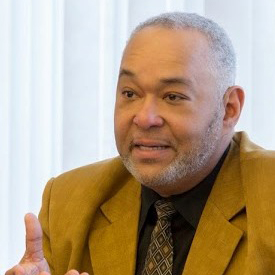 |
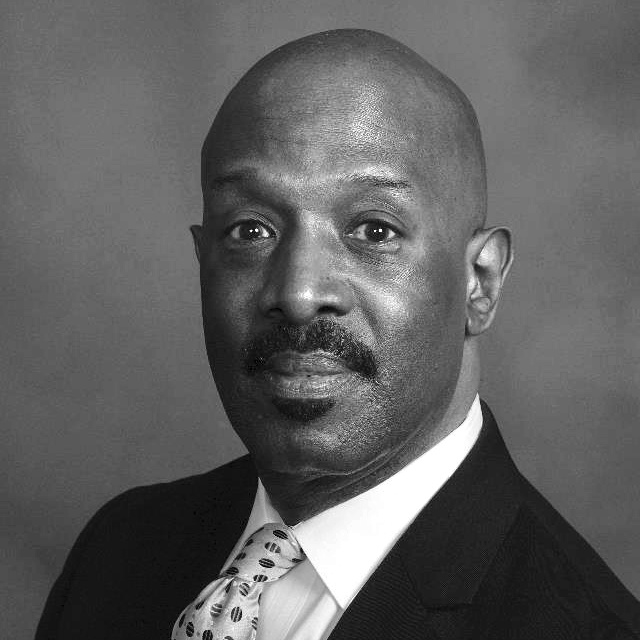 |
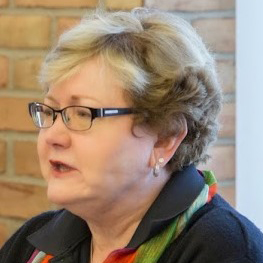 |
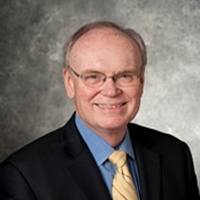 |
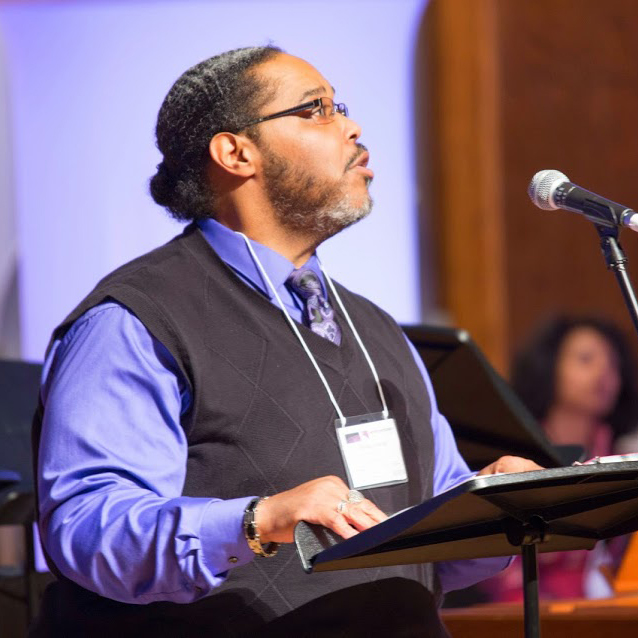 |
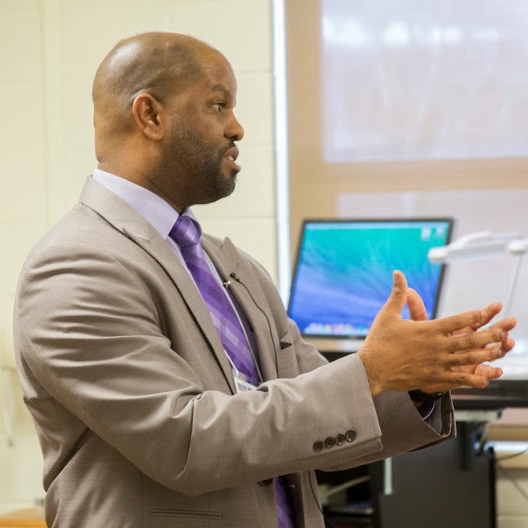 |
James Abbington is professor of music and worship at Candler School of Theology at Emory University, in Atlanta, Georgia. He is executive editor of the GIA African American Church Music series and has written and edited many books and hymnals on African American music and worship traditions, including Readings in African American Church Music and Worship, Volume 2 (GIA Publications, 2014).
Treasures
Both volumes of Readings in African American Church Music and Worship are written from the context of African American churches, but they focus on blessing the whole church. The first volume covers scholarship through 1999. However, a lot has happened since then. The second volume includes perspectives on neglected gifts and church traditions that I’ve been enlightened and informed on, such as Pentecostal and holiness traditions, praise and worship, hip hop, and women and gender. I used the second volume at Candler in a class that had many races and ethnicities, and each class member found themselves in this book. One said that if we hadn’t put African American in the title, then everyone would have bought the book, because it covers hot topics that Catholic, Protestant and Orthodox churches all deal with.
In the second volume, the biggest giant is something that gets little attention in African American research. And that is the Church of God in Christ and Arizona Dranes, where a blind pianist was very influential in gospel singing and playing. Melinda Weekes’ essay shows how the Church of God in Christ, a denomination that was despised and rejected, has emerged as very formative in setting music standards for so many churches, not just black ones.
There are rich treasures of hymns, songs and choral anthems from African American church worship traditions. They aren’t meant only to be sung by or for African Americans or to be seen as “owned” by us. Just think what the world would be like without all of us being able to sing “Bless the Lord, O My Soul,” “Soon and Very Soon” or “My Tribute: To God Be the Glory,” all written by Andraé Crouch.
Challenges
Volume 2 offers insights on what many graduates of the James Abbington Church Music Academy are confronting in the black church. They face unequal pay, phobias about women and gender, and lack of fruitful clergy-musician partnerships to plan worship together. Some black churches still don’t allow women to preach or pastor. The book’s liturgical theology section asks whether there is theological justification for what we do and preach about in worship. The preaching section deals with what it means to proclaim the Word. All these topics are culturally relevant for—but not unique to—the black church. The prosperity gospel is everywhere. Every church needs to deal with lament, sadness and things that are not always good. The very valuable contributions in this volume will have resonance to churches all over the world.
Michael R. Gittens has been a church musician for over four decades. He has accompanied, arranged and musically directed several gospel recordings. He is director of music and a licensed minister at Kaighn Avenue Baptist Church, in Camden, New Jersey, and choral assistant at Princeton Theological Seminary. He played organ and piano on Songs from the Sanctuary: Hymns, Spirituals & Classic Gospels, v. 1-3.
Treasures
African Americans have contributed to the world of sacred music a deep, abiding, spiritual something that I can’t really explain. It’s emotional, but it transcends emotions. It carries you through from one day to the next, and from one week to the next. I’ve found that not all black people have rhythm; but, for those who do, it’s a really strong sense. And we bring that through not just in black music but also into classical music.
I was born into a black Baptist church, started playing in church at age ten, went to a predominately-white Episcopal school and studied organ performance at Oberlin and Julliard. I am not a scholar, but simply a person who has a gift from God and experience with people from denominations all over. I really appreciate the host of historical things that I’m discovering in Readings in African American Church Music and Worship.
Challenges
We in the black church have not discovered how to pass on our musical treasures from one generation to the next. We tend to cram down our idea of “real music” in a way that immediately turns off the next generation. I have watched a decline in musicianship in the black church, which may be a result of music no longer being a priority in public schools, so students aren’t learning to read music. When I was a little kid, most churches had competent musicians and, at least, decent choirs that could sing anthems, hymns and spirituals. Even then, the anthem choirs and spirituals choirs looked down on each other.
An even larger problem is the tension between clergy and musicians. I’ve seen organists who want to be stars and pastors who care more about capturing the congregation’s admiration than preaching the Word. I’ve witnessed musical selections so powerful that the undeniable Spirit of God began to move. But instead of letting the Holy Spirit have its way after the ministry of music, preachers immediately mounted the pulpit and redirected attention back to themselves. I’ve seen these problems in black and non-black churches. God has given us so much to offer and share. If we can’t get it together in our congregations and communities, then it diminishes our effectiveness around the world.
Eileen Guenther teaches church music and worship, directs the chapel choir and co-directs chapel services at Wesley Theological Seminary in Washington, DC. She served three terms as president of the American Guild of Organists. She wrote Rivals or a Team: Clergy-Musician Relationships in the 21st Century (MorningStar, 2012) and a forthcoming book on The Power of Spirituals: In Their Own Words.
Treasures
One treasure I experience when worshiping in African American churches is a spirituality that is palpable, deeper and different, like when I worship in Africa. Another treasure is the body of 6,000-plus spirituals created in community and improvised according to time and place. Many deal with liberation, whether in the Second Coming or crossing the Mason-Dixon Line. It’s sad that so few African American churches still sing spirituals, because they touch so many of our issues today. I remember a baritone who broke down while the choir was singing “Sometimes I Feel Like a Motherless Child.” He had recently come out to his mom, and she said he was no longer welcome home for Christmas.
Challenges
I appreciate the insights on partnership challenges in Readings in African American Church Music and Worship, Volume 2. Partnership is a problem between music and worship, but also among all ministry teams, for example, when there are many music groups and dance groups in a single church. Partnership is also a problem between generations and because of financial challenges. Our country is still ghettoized socially and economically.
C. Michael Hawn teaches church music at Perkins School of Theology, Southern Methodist University, in Dallas, Texas. A global music expert, he wrote One Bread, One Body: Exploring Cultural Diversity in Worship and edited New Songs of Celebration Render (GIA Publications, 2013).
Treasures
One charism of many black churches is the holistic value on using the entire body, as well as the head, in worship. That’s true in most worldwide churches. So this African American worship value can instruct us in understanding that, around the globe, physical response engages the gathered body of Christ in relational experience. I’ve learned this from an African American United Methodist preacher who preaches from the lectionary and follows the ordo, yet allows room for the Holy Spirit to move. I see this same gift for improvisation in the ability to translate music from other eras and traditions and make it live now.
Another charism of African American church worship is that it’s actively dialogical, and not initiated only by what happens up front. There’s a vital hermeneutic and close relationship between scripture and the needs of the community. There’s a big emphasis on God being present here and now in worship.
Challenges
Some people stereotype African American worship as all the same. Dominant cultures need to view the various African American liturgical contexts as normative in education, not exotic or for a select group. Dominant cultures need to listen, learn and be vulnerable so they can build bridges. It can be challenging to develop a theology of worship that reaches out to other cultures while still providing experiences that articulate and develop African American identity.
The book raises issues that every church should consider. Professional musicians and worship leaders must resist usurping the voice of the people. We can’t have fullness of worship without remembering where we’ve come from. It’s easy to commodify global songs, to think “all those Africans are clappy and happy,” instead of realizing that a song comes out of apartheid struggle where people were killed while singing. Every song began somewhere as a witness to someone’s faith. We need to ask, “Who was that witness? What did they say? Why do we still sing it?” The witness may change in our interpretation, and we should talk together about that.
Within some African American churches, people either romanticize African roots or are unwilling to explore them. They sometimes struggle to recognize diversity within and among people of color, whether from Latino, Caribbean or African contexts.
William N. Heard is minister of liturgy & worship and family life at Kaighn Avenue Baptist Church, Camden, NJ. He is well known as a singer, songwriter, producer and he serves as psalmist and musician for the Hour of Power worship service at Princeton University. He produced the CD set Songs from the Sanctuary: Hymns, Spirituals & Classic Gospels, v. 1-3, with Michael R. Gittens and Princeton Theological Seminary Chapel Choirs.
Treasures
A particularly effective aspect of the African American worship tradition has historically been the inclusion of diverse genres of sacred music, where that diversity was allowed and encouraged. Incorporating sundry musical styles—anthems, hymns and hymn arrangements, concertized and folk spirituals, traditional to contemporary gospel music, praise and worship and devotional songs—in worship created an expansive reservoir of sacred music which congregations and music ministries could draw upon.
A charism or gift from African American worship experience in its most prolific expression would be how “free spirit” or progressive churches synthesized worship styles. Their personal and communal fervor, energy, emotion, exuberance, even lament and inspiration, moved them towards inclusivity, sociocultural identity, and a sense of a divine vertical and horizontal spiritual experience and expression.
Challenges
Some challenges emerging in the African American church are actually a resurgence of historic issues:
- excluding certain traditional or historic genres of sacred music as no longer relevant or current
- excluding genres deemed too contemporary or “worldly/jazzy/funky”—secular sounding—for church by certain age groups of parishioners
- increasing contemporary Christian and praise and worship music to the exclusion of other idioms composed and arranged by African American writers
- ever evolving ideas about “right”/true” worship music
- resistance to the “new” or “other” in sacred art forms, such as dance, mime, spoken word, rap and multimedia presentations
- the tension between music that’s created for the church and music that’s created for the music industry
Another challenge is the evolving nature of para-church worship, predominantly attended by African American parishioners, but decreasingly informed musically by the traditions of mainline musical styles and worship traditions, such as Baptist, Methodist and Church of God In Christ.
Ways to address these challenges include: talking about liberative diversity; revisiting historic musical contributions of African American composers and their music; intentionally creating more diverse eclectic musical experiences; and re-educating pastors, music staffs and parishioners about diverse styles of music through worship gatherings and church-wide workshops. Resources include GIA and NTimeMusic publishing companies; AfricanAmericanLectionary.org; Margaret Pleasant Douroux’s Heritage Music Foundation; Gospel Music Workshop of America (GMWA); YouTube and gospel music radio.
Emmett G. Price III teaches ethnomusicology at Northeastern University and worship history at Gordon Conwell Theological Seminary, both in Boston, Massachusetts. He pastors Community of Love Christian Fellowship and writes GIA Quarterly columns, scholarly articles and book chapters on Christian worship and African American sacred music. His book is The Black Church and Hip Hop Culture: Toward Bridging Generational Divide (Scarecrow, 2012).
Treasures
This volume lifts up the variety and diversity of African American worship traditions. It views the content creators as intellectuals. We often look at music making as a perfunctory practice, as if slaves made spirituals mainly to help them keep the pulse of their work. But making something out of nothing requires intellect. Another gift of this text is that it looks into why there’s a black church at all. It tells the stories of the historical, political and economic processes that affected musicians and churches. This book is about so much more than aesthetically pleasing aspects of church music “by those people over there.” If spirituals are only beautiful to you—and you don’t feel the pain—then you haven’t dealt with the spiritual.
This book is an integrative model of a lot of things that intertwine in African American worship traditions. It shows the power of understanding everything together—homiletics, praise and worship, composers, worship styles and practices—and how it all connects from yesterday to today to tomorrow. The black churches began as immigrant churches, diasporic churches. They found powerful ways to express their struggles and challenges. These vibrant forms of worship are tried, tested and true. That’s why spirituals, early traditional gospel, praise and worship, holy hip hop and gospel hip hop all cross their oceans. People who suffer and struggle look to these shared experiences for how to express that God is working it out in real time, real lives.
Challenges
I’ll mention three challenges. First, when your tradition is born out of systematic struggle and oppression, what happens when the perception is that the struggle is no longer in play? Each African American generation seems to toss a previous musical genre over their shoulders. In each genre there’s transference from the original content creator to those who have taken it on as their own expression. Blues started out as all black; now it’s all white. Hip hop has gone around the world. When we lament that many black churches only sing spirituals on the second Sunday of February [Black History Month], we can also understand that the value of each genre is much broader than its moment in African American time.
Second, there’s a generational struggle in all our churches. We think that the only valuable music is whatever we like or liked from ages 18 to 26. Third, there’s a tension between being participants or creators in a great tradition and understanding its absolute value to the church universal. If we realized the value, we’d become cultural caretakers who uplift and value the stories of why something is created. We’d be more open to innovators instead of despising and rejecting them. Early on, people had a problem with Mattie Moss Clark’s gospel harmonies, Rosetta Tharpe’s guitar and Thomas Dorsey’s blues. They didn’t like James Cleveland adding sevenths and ninths in choral arrangements, Kirk Franklin adding hippity-hop stuff or Richard Smallwood playing classical music.
Links
- Readings in African American Church Music and Worship, Volume 2
- 49 Hidden Treasures from the African American Heritage Hymnal double CD
- Somebody’s Calling My Name
LEARN MORE
Hear what each presenter said in their Treasure of African American Worship panel sessions at the 2015 Calvin Symposium on Worship.
Check out books and hymnals these presenters recommend:
- African American Heritage Hymnal edited by Delores Carpenter and Nolan E. Williams, Jr
- Disintegration: The Splintering of Black America by Eugene Robinson
- The Music of Black Americans by Eileen Southern
- Representing African Music: Postcolonial Notes, Queries, Positions by Kofi Agawu
- Somebody’s Calling My Name by Wyatt Tee Walker
- Songs of Zion (Supplemental Worship Resources) by Jefferson Cleveland
- The Spirituals and the Blues: An Interpretation by James Cone
- Zion Still Sings! For Every Generation by Abingdon Press
Listen to these recommended music resources:
- 49 Hidden Treasures from the African American Heritage Hymnal double CD by James Abbington
- Songs from the Sanctuary: Hymns, Spirituals & Classic Gospels, v. 1-3, by William N. Heard, Michael R. Gittens, and Princeton Theological Seminary Chapel Choirs
- WOW Gospel Music yearly CD series
Read an article by Melinda Weekes about how Church of God in Christ women influenced gospel music. The story includes short video clips.
START A DISCUSSION
Feel free to print and distribute these stories at your staff, education, worship arts or music meeting. These questions will help people think about how to name, celebrate and cherish gifts from African American church music and worship traditions.
- Panelists said that many musical genres born in African American churches are no longer appreciated in those churches. Yet they’re sung and loved around the world. How does this match your congregation’s experience?
- Which treasures highlighted above would you like to explore in your church? What first steps might you take to do this?
- Which challenges mentioned above seemed especially relevant in your context? How can you start good conversations about these challenges?